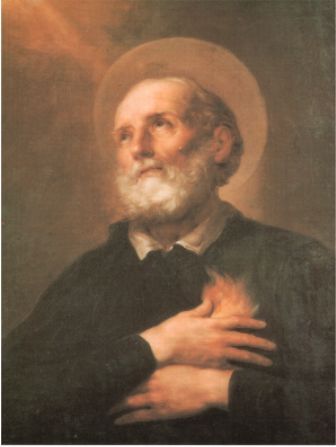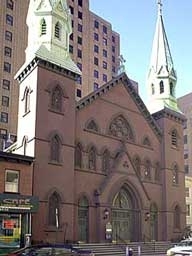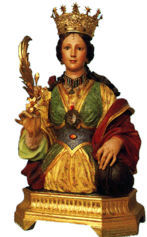
Philip Neri was a sign of contradiction, combining popularity with piety against the background of a corrupt Rome and a disinterested clergy, the whole post-Renaissance malaise.
At an early age, he abandoned the chance to become a businessman, moved to Rome from Florence and devoted his life and individuality to God. After three years of philosophy and theology studies, he gave up any thought of ordination. The next 13 years were spent in a vocation unusual at the time—that of a layperson actively engaged in prayer and the apostolate.
As the Council of Trent was reforming the Church on a doctrinal level, Philip’s appealing personality was winning him friends from all levels of society, from beggars to cardinals. He rapidly gathered around himself a group of laypersons won over by his audacious spirituality. Initially they met as an informal prayer and discussion group, and also served poor people in Rome.
At the urging of his confessor, he was ordained a priest and soon became an outstanding confessor, gifted with the knack of piercing the pretenses and illusions of others, though always in a charitable manner and often with a joke. He arranged talks, discussions and prayers for his penitents in a room above the church. He sometimes led “excursions” to other churches, often with music and a picnic on the way.
Some of his followers became priests and lived together in community. This was the beginning of the Oratory, the religious institute he founded. A feature of their life was a daily afternoon service of four informal talks, with vernacular hymns and prayers. Giovanni Palestrina was one of Philip’s followers, and composed music for the services.
The Oratory was finally approved after suffering through a period of accusations of being an assembly of heretics, where laypersons preached and sang vernacular hymns! (Cardinal Newman founded the first English-speaking house of the Oratory three centuries later.)
Philip’s advice was sought by many of the prominent figures of his day. He is one of the influential figures of the Counter-Reformation, mainly for converting to personal holiness many of the influential people within the Church itself. His characteristic virtues were humility and gaiety.
Local connection
In 1990 Bishop Mugavero, seeking a permanent home for the new Brooklyn Oratory of St. Philip Neri, entrusted to them the pastoral care of St. Boniface parish. After years of extensive renewal, the Brooklyn Oratory today provides a home for a new generation of pilgrims. You may visit the Oratory in Downtown Brooklyn off of Fulton Street at 190 Duffield Street.




